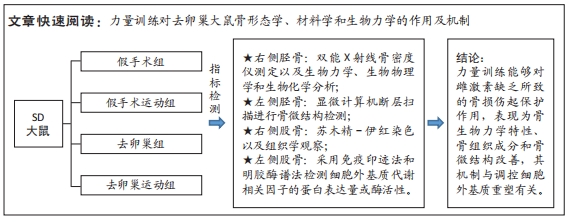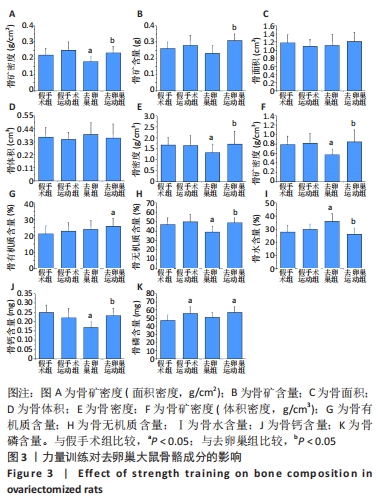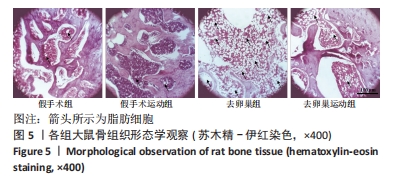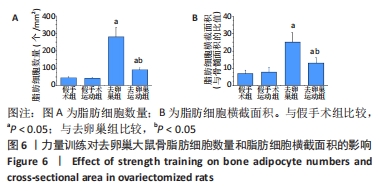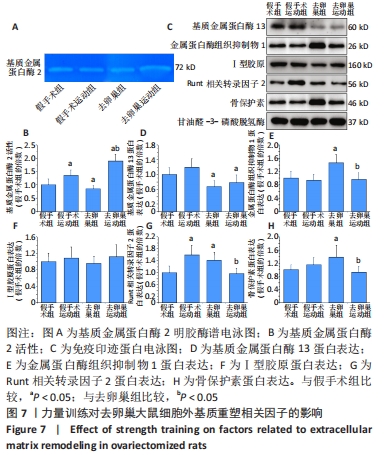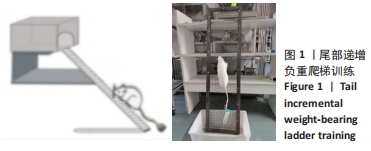[1] MINAKOVIĆ I, ZVEKIć-SVORCAN J, JANKOVIĆ T, et al. Early menopause and risk of fractures-a preventable gap. Iran J Public Health. 2023;52(3):534-541.
[2] HäNDEL MN, CARDOSO I, VON BÜLOW C, et al. Fracture risk reduction and safety by osteoporosis treatment compared with placebo or active comparator in postmenopausal women: systematic review, network meta-analysis, and meta-regression analysis of randomised clinical trials. BMJ. 2023;381:e068033.
[3] XU X, LI X, LIANG Y, et al. Estrogen Modulates Cartilage and subchondral bone remodeling in an ovariectomized rat model of postmenopausal osteoarthritis. Med Sci Monit. 2019;25:3146-3153.
[4] JOUSHEGHAN SS, SAJJADI MM, JOUSHEGHAN SS, et al. Extracellular vesicles as novel approaches for the treatment of osteoarthritis: a narrative review on potential mechanisms. J Mol Histol. 2021;52(5):879-891.
[5] KOU L, JIANG X, LIN X, et al. Matrix Metalloproteinase inspired therapeutic strategies for bone diseases. Curr Pharm Biotechnol. 2021;22(4):451-467.
[6] DE FIGUEIREDO F, AZEVEDO JP, LARA MG, et al. Recombinant human MMP-2 associated with monoolein improves bone repair. Bratisl Lek Listy. 2020;121(8):571-579.
[7] GUIMARAES-STABILI MR, DE MEDEIROS MC, ROSSI D, et al. Silencing matrix metalloproteinase-13 (Mmp-13) reduces inflammatory bone resorption associated with LPS-induced periodontal disease in vivo. Clin Oral Investig. 2021;25(5):3161-3172.
[8] GRAHAM S, ARCHER DF, SIMON JA, et al. Review of menopausal hormone therapy with estradiol and progesterone versus other estrogens and progestins. Gynecol Endocrinol. 2022;38(11):891-910.
[9] YONG EL, LOGAN S. Menopausal osteoporosis: screening, prevention and treatment. Singapore Med J. 2021;62(4):159-166.
[10] DING R, ZHANG N, WANG Q, et al. Alterations of the subchondral bone in osteoarthritis: complying with Wolff’s Law. Curr Rheumatol Rev. 2022;18(3):178-185.
[11] SANCHEZ-TRIGO H, RITTWEGER J, SAÑUDO B. Effects of non-supervised exercise interventions on bone mineral density in adult women: a systematic review and meta‑analysis. Osteoporos Int. 2022;33(7):1415-1427.
[12] SÁ K, DA SILVA GR, MARTINS UK, et al. Resistance training for postmenopausal women: systematic review and meta-analysis. Menopause. 2023;30(1):108-116.
[13] YUAN Y, CHEN X, ZHANG L, et al. The roles of exercise in bone remodeling and in prevention and treatment of osteoporosis. Prog Biophys Mol Biol. 2016;122(2):122-130.
[14] WANG Z, DUAN R, JIN Y, et al. Effects of ferric ammonium citrate on iron accumulation, bone turnover and bone density in ovariectomized rat models with osteoporosis. Cell Mol Biol (Noisy-le-grand). 2022;68(8):163-166.
[15] LEE S, KIM K, LAMBRECHT NJ, et al. Interaction of resistance training, electroacupuncture and Huang Qi supplementation on skeletal muscle function and GLUT4 protein concentration in rats. Acupunct Med. 2016;34(5):380-385.
[16] 付鹏宇,于晶晶,龚丽景.叉头框蛋白O1介导的自噬途径在抗阻训练缓解低氧诱导大鼠肌萎缩中的作用[J].中国病理生理杂志,2022,38(9):1667-1676.
[17] 刘芃,马刚,何瑞波,等.有氧运动干预慢性肾功能衰竭模型大鼠的肾脏纤维化[J].中国组织工程研究,2023,27(20):3209-3215.
[18] GENG Q, GAO H, YANG R, et al. Pyrroloquinoline quinone prevents estrogen deficiency-induced osteoporosis by inhibiting oxidative stress and osteocyte senescence. Int J Biol Sci. 2019;15(1):58-68.
[19] 郑鹏骥,陆杨,张象,等.吡咯喹啉醌通过降低氧化应激和RANKL/OPG比率减少去卵巢大鼠骨量流失研究[J].中国骨质疏松杂志,2020,26(10):1431-1435.
[20] 杨芳芳,葸慧荣,高玉海,等.丹参酮ⅡA对去卵巢大鼠骨密度及骨形态计量学的影响[J].中华骨质疏松和骨矿盐疾病杂志,2018,11(2):166-171.
[21] UNAL M, CREECY A, NYMAN JS. The role of matrix composition in the mechanical behavior of bone. Curr Osteoporos Rep. 2018;16(3):205-215.
[22] ZHANG N, MAGLAND JF, RAJAPAKSE CS, et al. Assessment of trabecular bone yield and post-yield behavior from high-resolution MRI-based nonlinear finite element analysis at the distal radius of premenopausal and postmenopausal women susceptible to osteoporosis. Acad Radiol. 2013;20(12):1584-1591.
[23] WESCOTT DJ. Postmortem change in bone biomechanical properties: Loss of plasticity. Forensic Sci Int. 2019;300:164-169.
[24] SALAS-RAMIREZ M, LASSMANN M, TRAN-GIA J. Quantification of the volume fraction of fat, water and bone mineral in spongiosa for red marrow dosimetry in molecular radiotherapy by using a dual-energy (SPECT/)CT. Z Med Phys. 2022;32(4):428-437.
[25] JU YI, SONE T, OHNARU K, et al. Effect of swimming exercise on three-dimensional trabecular bone microarchitecture in ovariectomized rats. J Appl Physiol (1985). 2015; 119(9):990-997.
[26] DIAZ BRINTON R. Minireview: translational animal models of human menopause: challenges and emerging opportunities. Endocrinology. 2012;153(8):3571-3578.
[27] MEAKIN LB, UDEH C, GALEA GL, et al. Exercise does not enhance aged bone’s impaired response to artificial loading in C57Bl/6 mice. Bone. 2015;81:47-52.
[28] TANG L, GAO X, YANG X, et al. Ladder-climbing training prevents bone loss and microarchitecture deterioration in diet-induced obese rats. Calcif Tissue Int. 2016;98(1): 85-93.
[29] LITTLE-LETSINGER SE, PAGNOTTI GM, MCGRATH C, et al. Exercise and diet: uncovering prospective mediators of skeletal fragility in bone and marrow adipose tissue. Curr Osteoporos Rep. 2020;18(6):774-789.
[30] HUANG X, CHEN W, GU C, et al. Melatonin suppresses bone marrow adiposity in ovariectomized rats by rescuing the imbalance between osteogenesis and adipogenesis through SIRT1 activation. J Orthop Translat. 2023;38:84-97.
[31] SHIGUEMOTO GE, PRESTES J, LEITE RD, et al. Effects of resistance training on matrix metalloproteinase-2 activity and biomechanical and physical properties of bone in ovariectomized and intact rats. Scand J Med Sci Sports. 2012;22(5):607-617.
[32] TANG SY, HERBER RP, HO SP, et al. Matrix metalloproteinase-13 is required for osteocytic perilacunar remodeling and maintains bone fracture resistance. J Bone Miner Res. 2012;27(9):1936-1950.
[33] JEMTLAND R, HOLDEN M, REPPE S, et al. Molecular disease map of bone characterizing the postmenopausal osteoporosis phenotype. J Bone Miner Res. 2011;26(8):1793-1801.
[34] SCHILTZ C, MARTY C, DE VERNEJOUL MC, et al. Inhibition of osteoblastic metalloproteinases in mice prevents bone loss induced by oestrogen deficiency. J Cell Biochem. 2008;104(5):1803-1817.
[35] SOBUE T, HAKEDA Y, KOBAYASHI Y, et al. Tissue inhibitor of metalloproteinases 1 and 2 directly stimulate the bone-resorbing activity of isolated mature osteoclasts. J Bone Miner Res. 2001;16(12):2205-2214.
[36] DE FARIAS JUNIOR GC, DE SOUSA NETO IV, GUZZONI V, et al. Remodeling process in bone of aged rats in response to resistance training. Life Sci. 2020;256:118-129.
[37] GAMSJAEGER S, BROZEK W, RECKER R, et al. Transmenopausal changes in trabecular bone quality. J Bone Miner Res. 2014;29(3):608-617.
[38] RUIZ P, HANDAN BA, DE MOURA C, et al. Protective effect of grape or apple juices in bone tissue of rats exposed to cadmium: role of RUNX-2 and RANK/L expression. Environ Sci Pollut Res Int. 2018;25(16):15785-15792.
[39] ORTH M, SHENAR AK, SCHEUER C, et al. VEGF-loaded mineral-coated microparticles improve bone repair and are associated with increased expression of epo and RUNX-2 in murine non-unions. J Orthop Res. 2019;37(4):821-831.
[40] HAYAMI T, KAPILA YL, KAPILA S. Divergent upstream osteogenic events contribute to the differential modulation of MG63 cell osteoblast differentiation by MMP-1 (collagenase-1) and MMP-13 (collagenase-3). Matrix Biol. 2011;30(4):281-289.
[41] 刘晨涛,张娟娟,苗华,等.负重爬梯运动调节去卵巢大鼠OPG/Ikkα/Runx2基因表达以及对股骨结构和生物力学的影响[J].中国运动医学杂志,2019,38(4):296-304.
[42] GHARIBI B, CAMA G, CAPURRO M, et al. Gene expression responses to mechanical stimulation of mesenchymal stem cells seeded on calcium phosphate cement. Tissue Eng Part A. 2013;19(21-22):2426-2438.
[43] KLEIN-NULEND J, BACABAC RG, BAKKER AD. Mechanical loading and how it affects bone cells: the role of the osteocyte cytoskeleton in maintaining our skeleton. Eur Cell Mater. 2012;24:278-291.
[44] ROCHETTE L, MELOUX A, RIGAL E, et al. The Role of osteoprotegerin in vascular calcification and bone metabolism: the basis for developing new therapeutics. Calcif Tissue Int. 2019;105(3):239-251.
[45] 王强,杨民,王剑.跑台运动对去卵巢大鼠骨组织中OPG、RANKL和RUNX2 mRNA表达的影响[J].中国骨伤,2013,26(11):940-943. |
